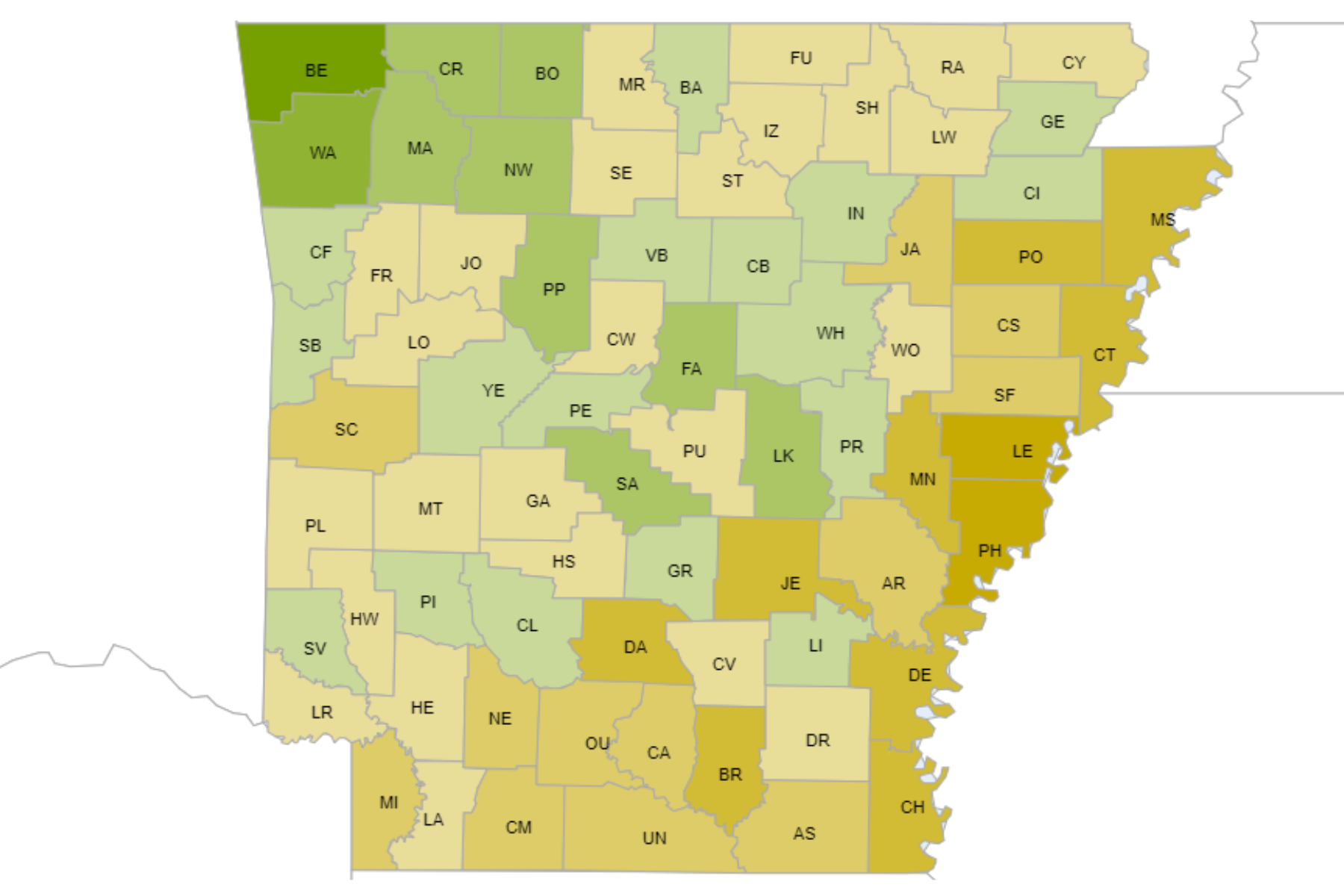
Author
Elizabeth (Izzy) Montgomery, MPA
Policy Analyst
Contact
ACHI Communications
501-526-2244
jlyon@achi.net
The 2024 edition of an annual report ranking U.S. counties based on health outcomes and health factors reveals ongoing gaps between urban and rural regions in Arkansas.
Released Wednesday, March 20, the County Health Rankings & Roadmaps report rates Benton, Washington, and Faulkner counties as first, second, and third, respectively, in Arkansas in terms of best overall health outcomes. While Benton and Washington counties held the same positions in last year’s rankings, the third-highest ranking went to Saline County in last year’s report.
The counties with the lowest rankings for health outcomes — meaning their outcomes are the least favorable — in this year’s report are the Delta counties of Monroe (73rd), Lee (74th), and Phillips (75th). Phillips County was also ranked 75th last year, while Monroe and Lee counties have switched places from last year, when they were ranked 74th and 73rd, respectively. Generally, counties across the Delta region tend to rank below counties in other parts of the state in this year’s report.

County Health Rankings & Roadmaps, a program of the University of Wisconsin Population Health Institute, also provides comparisons between Arkansas and the U.S. for each measure. Arkansas’s health outcomes are less favorable than the nation’s in every measure in this year’s report.
In addition to health outcomes (length of life and quality of life, the latter based on self-reported health status and low birthweight rate), the report ranks states for overall health factors (health behavior, clinical care, social and economic factors, and physical environment) among county residents.

For overall health factors, Benton, Washington, and Saline counties rank first, second, and third, respectively, while Chicot (73rd), Phillips (74th), and Lee (75th) are the lowest-ranked. Arkansas’s health factors are less favorable than the nation’s in 22 of the 29 measures included in the overall rankings. Among these measures are:

Health factors that are more favorable for Arkansas than the U.S. as a whole include:
- Percentage of adults reporting binge or heavy drinking.
- Percentage of population ages 16 and older unemployed but seeking work.
- Number of membership associations (civic, political, religious, sports, and professional organizations) per 10,000 people, a measure of opportunities for social support.
- Percentage of households with at least 1 of 4 housing problems: overcrowding, high housing costs, lack of kitchen facilities, or lack of plumbing facilities.
- Among workers who commute in their car alone, the percentage that commute more than 30 minutes.
This year’s report also highlights the connection between civic participation and health. Specifically, the report assesses civic infrastructure, defined as opportunities for the public to connect, including access to local news, broadband internet, and public libraries. Key takeaways regarding civic infrastructure include:
- Counties across the U.S. that are deemed the healthiest, measured in length of life and quality of life, tend to have strong civic infrastructure compared to the least healthy counties.
- Civic infrastructure is under-resourced in more rural areas of the country, including along the U.S. Mexico Border, the Black Belt region (285 counties in the Southern U.S. where 30% or more of residents identify as non-Hispanic Black or African American alone), Appalachia (423 counties across 13 states from southern New York to northern Mississippi that span the Appalachian Mountain range), and areas surrounding American Indian/Alaska Native tribal areas.
- The report states that regions that create barriers to civic participation, including laws that create obstacles to voting, hamper civic engagement. Life expectancy is also lower in these counties compared to those with fewer barriers to civic life.
For a discussion of Arkansas county standings from the 2023 County Health Rankings & Roadmaps report, see our blog post.





